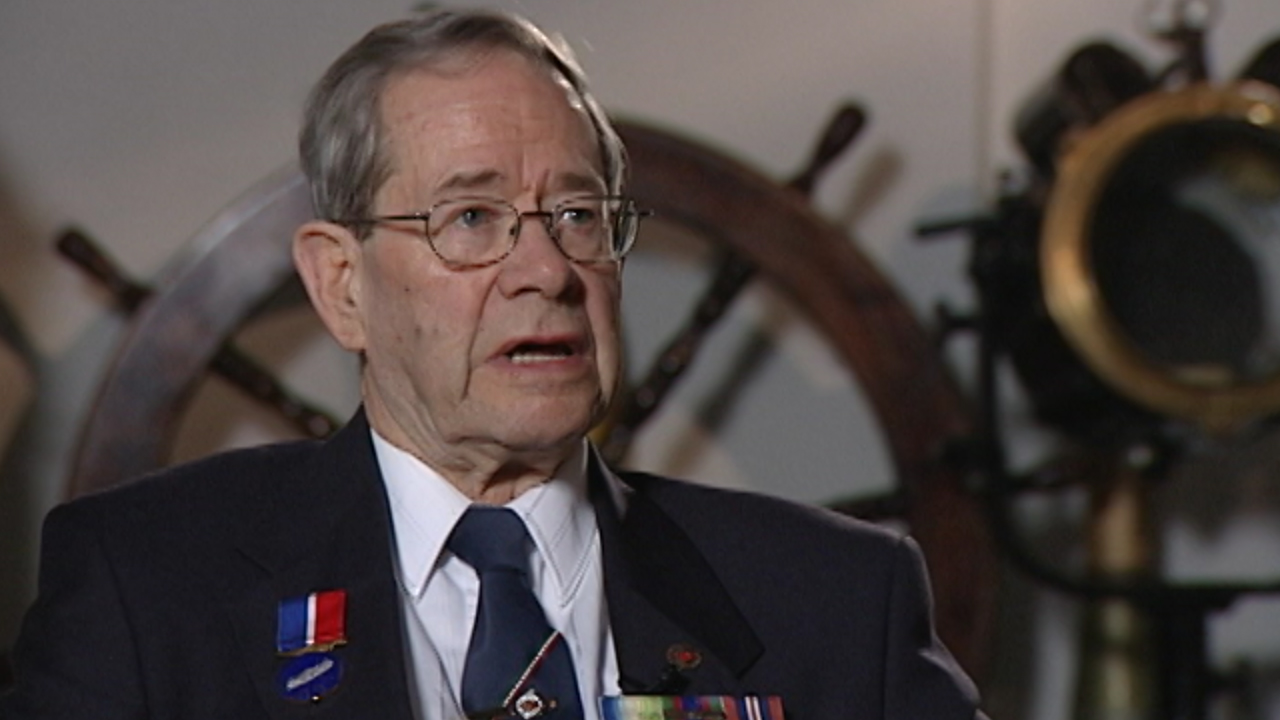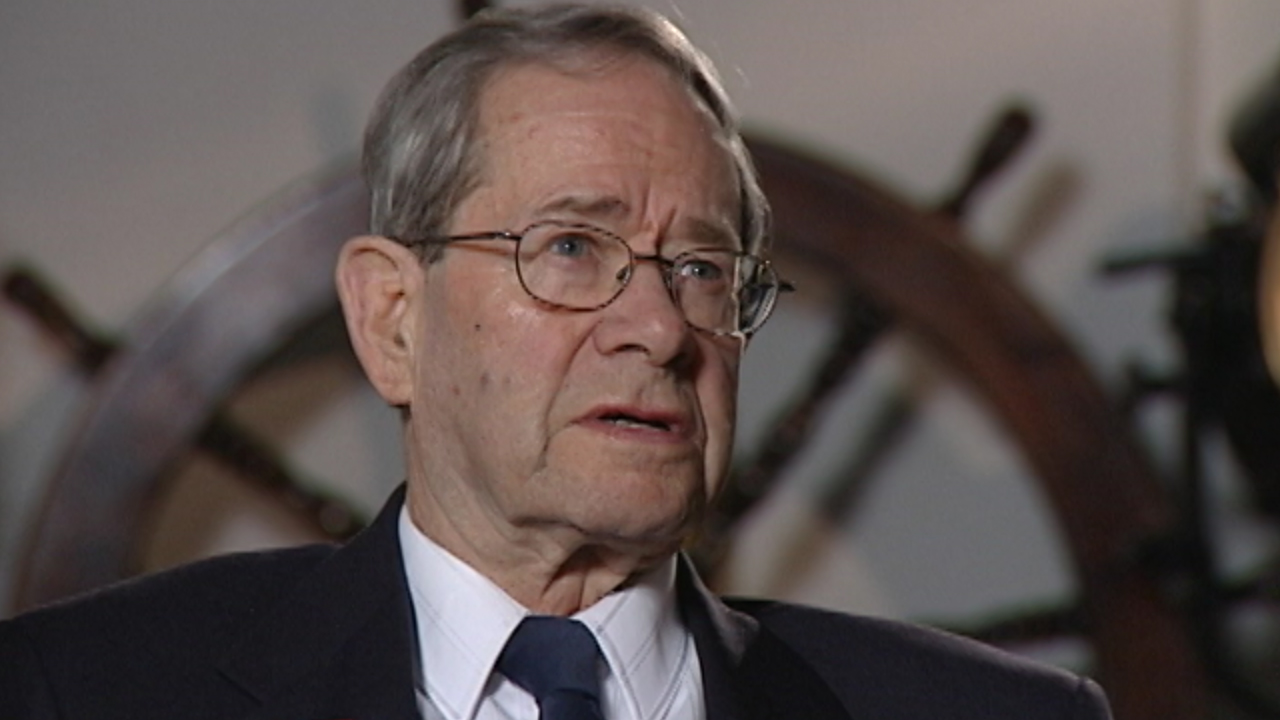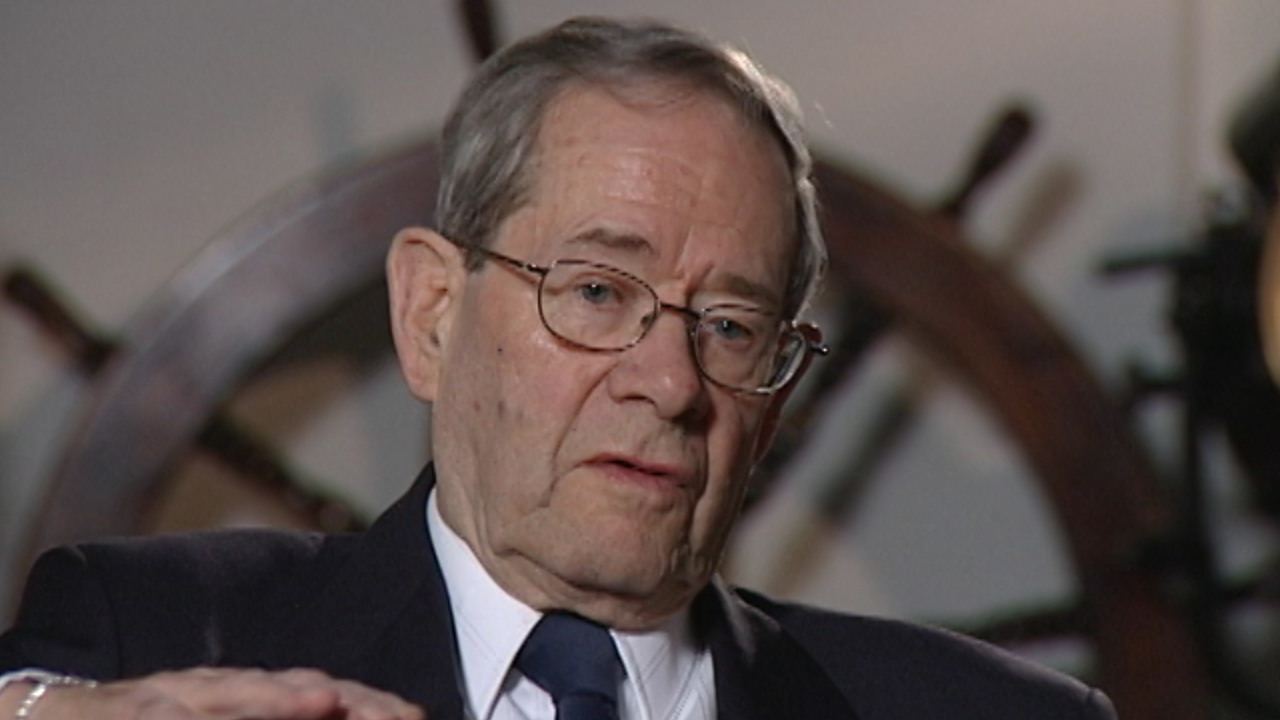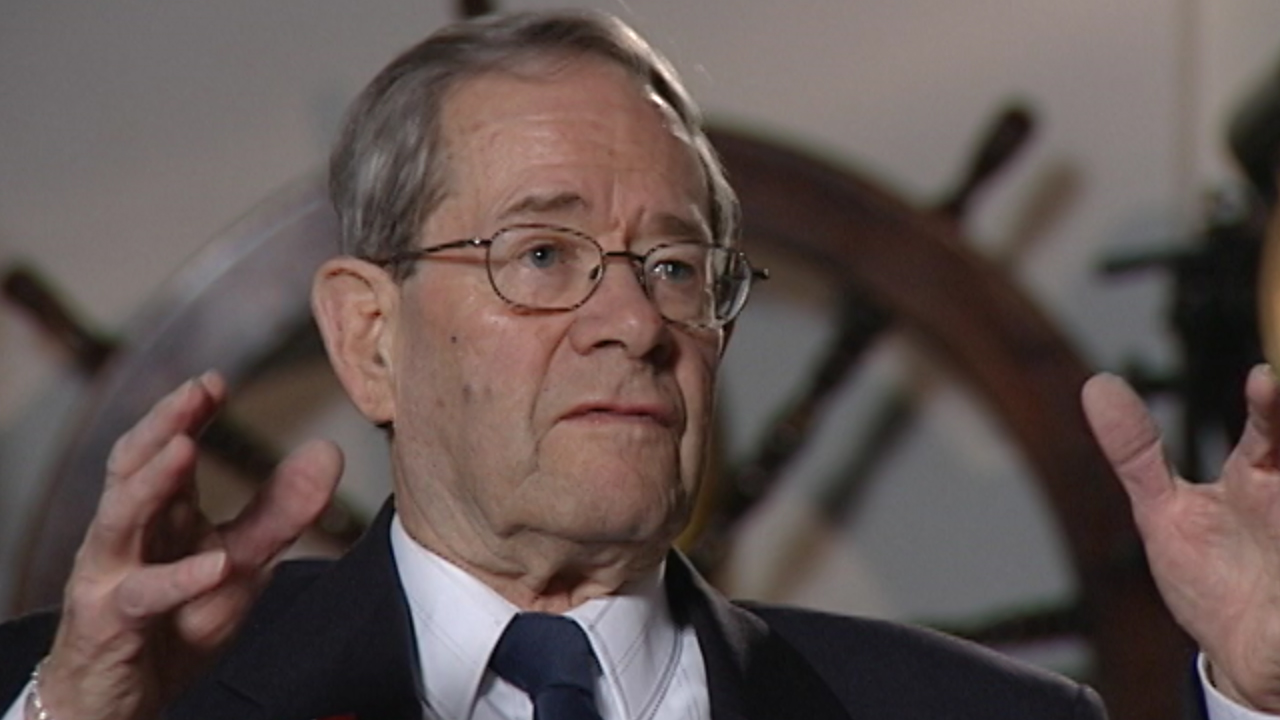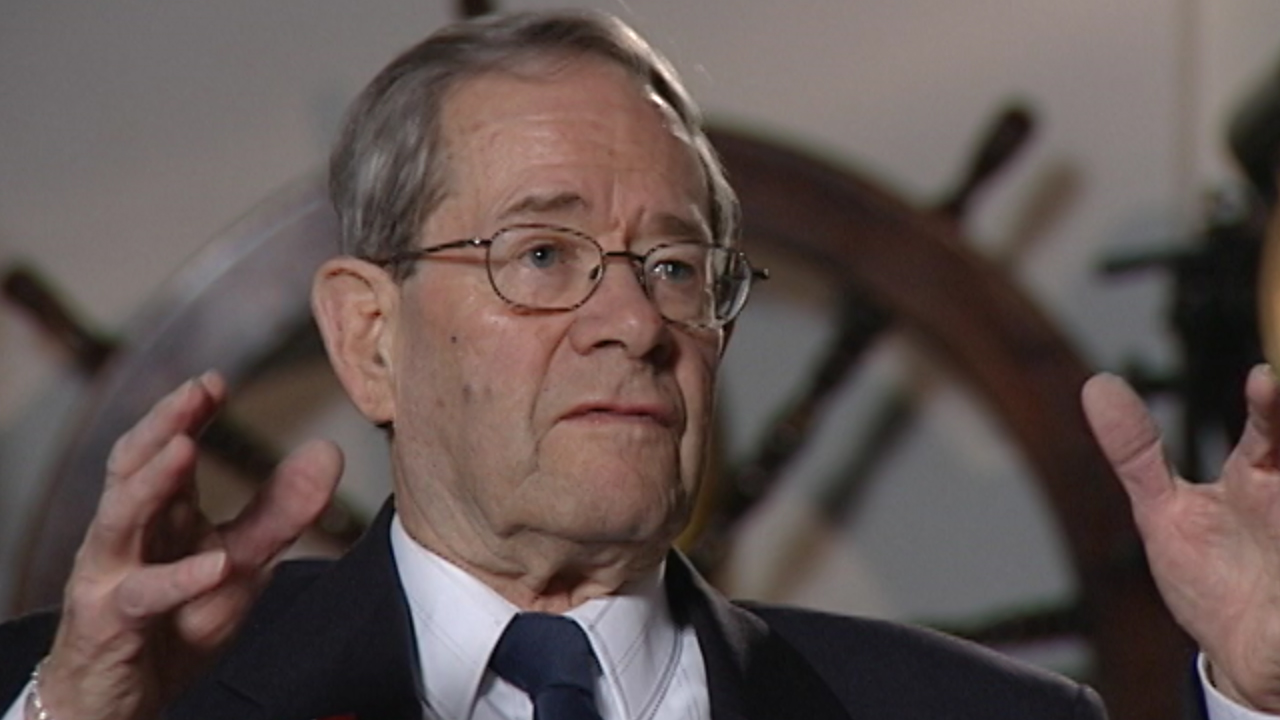Firing the Boilers
Heroes Remember
Firing the Boilers
Transcript
We had a trimmer, which I started off as.
A trimmer is a coal passer if, you know, some people
don’t know what that is, and you were with three firemen.
Okay, that was one room. You were four to a room.
We had sort of a lead fireman. When he opened the door
of his fire, of his boiler, the other two did so accordingly.
So that you were all in sync with one another.
That way there was less heat loss. So your first thing to do,
you opened the first door on your left and you had what
they called a splice bar. I’m sure it weighed about
twenty pounds. It was a two-inch steel bar and about eight
feet long. You put that into the fire and you shook it
up to get the air into it and you moved on to the next
one which you did the same thing and also the third one.
Then you came back to that first one and you raked it a bit
to loosen it up and then you went on to the other two
to do the same thing and everybody sort of in sync
with the others doing the same thing and then on the final one,
you start your shoveling and you shoveled from a hole that had
been brought down by the, from the bunkers, by the trimmer
that I mentioned earlier, which I did on the first trip and
you put your coal in. That Sydney slack was just,
almost every watch you were shoveling coal continuously.
So it was hard work and if, you know, if you were young
like I was like we all were, it was no effort and
it was sort of an adventure.
Coming back we took on what they call bunkers loading coal
from, well there was two ports, Cardiff, Wales and Swansea,
Wales and the coal was totally different. It was called,
Welsh anthracite. We got big chunks like that.
You’d fire that and it would last probably ten,
fifteen minutes. So it was great coal to have coming back.
Description
Mr. Colcomb describes in detail the make up of an engine room watch, and goes on to describe synchronism required among the crew to keep the boilers properly fired.
Ross Colcomb
Ross Colcomb was born in Montreal, Quebec on July 2, 1926. After being an Air Cadet in his early teens, he enlisted in the Royal Canadian Air Force at age seventeen, and took air crew training. The demand for air crew was low near the end of the war, so Mr. Colcomb was discharged after nine months. He immediately joined the Merchant Navy. After a short period of engineering and gunnery training, Mr. Colcomb went to sea as a fireman aboard the SS Elk Island Park, which ferried war materials to England for the duration of the Second World War.
Meta Data
- Medium:
- Video
- Owner:
- Veterans Affairs Canada
- Duration:
- 2:07
- Person Interviewed:
- Ross Colcomb
- War, Conflict or Mission:
- Second World War
- Battle/Campaign:
- Battle of the Atlantic
- Branch:
- Merchant Navy
- Units/Ship:
- Royal Canadian Electrical Mechanical Engineers
- Occupation:
- Fireman
Related Videos
- Date modified:



